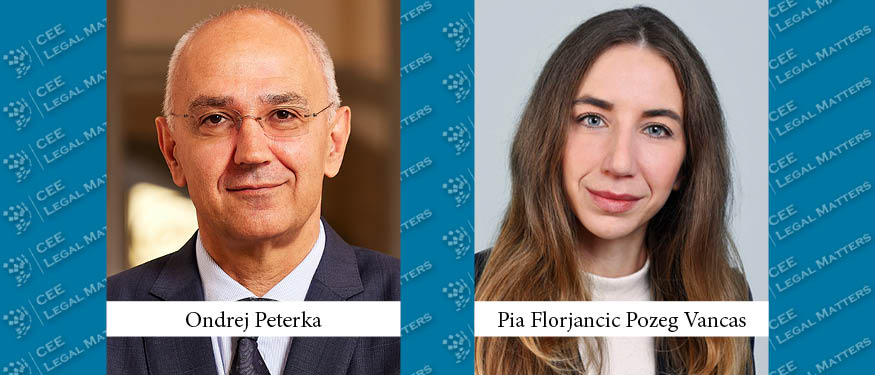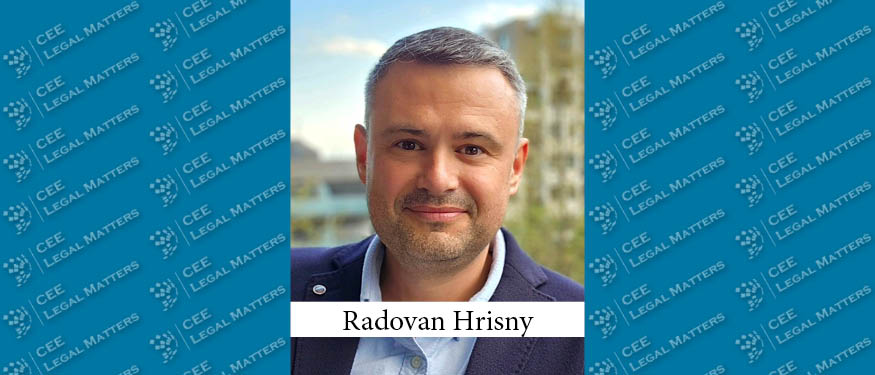For our Checking In feature, we reach out to partners and heads of practice across CEE to learn how specific practice areas are faring in their jurisdictions. This time around we asked firm Energy experts: What, in your view, is the most effective scheme currently in place in your jurisdiction to attract investments in renewable energy? If you had to pick one, what additional step from the regulators do you believe would have the most positive impact?
North Macedonia
North Macedonia strategically aims to increase the use of renewable energy to a minimum of 40% of gross consumption of final energy and to double the increase installed electricity production capacity, up to 3.8 GW until 2040.
The country currently applies two schemes to support investments in renewable energy sources.
Premiums or preferential tariffs for produced electricity can be used by companies that acquired the status of a preferential producer of electricity from renewable sources.
Premiums in the form of an additional fixed amount payable to the electricity gross market sales price are granted through auction, for wind and photovoltaic PPs, for a period of 20 or 15 years, on the basis of agreement for use of premium for the relevant PP.
Preferential tariffs can be used for electricity produced in hydro and wind PP, biomass, and biogas TPP. They apply to limited, but significant, time periods (10, 15, or 20 years, depending on the type of PP), and their amount ranges from EUR 0.089 to 0.18 per kWh (depending on the monthly quantity of delivered electricity).
Both subsidies can be used only if the PP meets relevant conditions, particularly if the installed capacity is within the quantities defined by the Government.
While the premium users are due to sell produced electricity on the electricity market, the preferential tariff users sell it only to the electricity market operator (who is due to purchase it).
The increase of total installed capacity of the preferential electricity producers which are capable to receive subsidies and/or time periods to which the subsidies apply will also encourage investments in the renewable energy, and will assist the Government in the realization of the green scenario for radical transition from conventional energy sources and termination to use lignite.
Vesna Gavriloska, Partner, Cakmakova Advocates
Russia
In Russia, the development of the technological infrastructure for renewable energy sources through 2025 is expected to be achieved through the construction of wind power plants (3154.4 MW) and solar power plants (1248.5 MW). The construction of wind power plants is planned for the power grids of the Northwest (351 MW), Middle Volga (411 MW), South (2126.9 MW), and Urals (265.5 MW). By 2022, the power grid of the Middle Volga is expected to see the commissioning of 155 MW in solar generation.
With regard to global trends in renewable energy sources, Moody’s is projecting that many companies will be forced to cut back on their investments in new oil & gas projects while increasing their expenditures on shifting to “cleaner” technologies entailing fewer greenhouse-gas emissions.
The optimistic outlook for data on the commissioning of RES facilities points towards investment projects mainly being concentrated in those constituent entities of the Russian Federation where it’s the most geographically and economically advantageous. In Russia, I view the mechanism of concluding long-term RES capacity-supply agreements featuring the possibility of cost reimbursement and a yield of roughly 15% as the most effective arrangement for attracting investments. On the long-term and innovation-driven projects, the investing enterprise increases its potential output (assets) and the floating assets it needs for its day-to-day functioning.
I also view ensuring equally competitive terms among RES-based energy producers as an important factor in attracting investments. This can be achieved through the exercise of state control over the competitive capacity outtake of RES investment projects. A prime example of encouraging the advancement of “green energy” is the practice pursued by the Federal Antimonopoly Service of Russia.
I would venture to say that a positive step in building a future for alternative energy in Russia is the active embrace by oversight agencies of innovative technological solutions in the RES field (automation, blockchain, “smart” grids, etc.). These technologies are specifically designed to lower energy-resource costs and support the smooth integration of renewable energy sources into the existing power grid.
Tatiana Basova, Senior Economist, Kulik & Partners
Slovakia
Both the Czech Republic and Slovakia had their photovoltaic boom in 2010-2012 and since then there have been no ambitions or real efforts to attract investments in renewable energy. Buying existing renewable installations with a fixed feed-in tariff for the next 7-10 years is still attractive. From the governments, we request more legal certainty.
Bernhard Hager, Managing Partner, CMS Slovakia
Slovenia
I have difficulties selecting between the following two:
Support package for electricity from renewable energy sources and advanced CHP technology is available where the electricity production costs from such sources exceed the electricity market price. The support is provided either as ensured purchase of electricity supplied to the public grid or as financial support for current activities. The most recent call in the total amount of EUR 10 million will close on September 10, 2020.
Grants under the public tender for co-financing of the purchase and installation of solar electricity production units in a total amount of EUR 10 million remain open until September 25, 2020, and will award grants for co-financing of 20% of the operation, however not more than EUR 200 per installed 1 kW.
One initiative, in my opinion, has potential, but it has so far not yet been sufficiently exploited for renewable energy purposes:
Recently Slovenia introduced new measures to accelerate the implementation of various investments. The measures include amendments to speed up the bureaucratic procedures for approvals of “significant” investments, amendments to speed up issuance of building permits by limiting the participation of NGOs, and amendments to speed up procedures for issuing environmental permits. While these new measures are certainty aimed in the right direction as the prolonged and complicated bureaucratic procedures seem to be one of the main obstacles for investments in Slovenia, it is questionable whether they will achieve the desired effect and promote investments into clean energy. The limitations imposed on the participation of NGOs have been temporarily stayed by the Constitutional Court and perhaps even contravene EU law. In such cases, the permits issued in such procedures would be annulled, which in my opinion poses even more risk for the investors. Also, it is regrettable to see only a few clean energy projects included on the “significant” investments list.
Spela Remec, Senior Associate, Head of Sustainable Energy Section of the Energy and Environmental Law Department, Selih & Partnerji Law Firm
Turkey
The Renewable Energy Support Scheme (YEKDEM) is the most effective scheme implemented by the Turkish government to attract investments in renewable energy. Facilities generating electricity from renewable energy sources that are currently operational or will be in operation before December 31, 2020 will benefit from feed-in tariffs in USD for a term of ten years. There are also additional financial incentives for the use of domestically manufactured equipment and machinery. Following the implementation of YEKDEM, Turkey has significantly increased its renewable energy capacity and is now listed amongst countries with the highest proportion of renewable energy use in its total consumption.
As the deadline for YEKDEM applications is December 31, 2020, implementing an efficient replacement for potential investors is vital. Offering similar tariff incentives would be preferable as the fixed purchase guarantee has been proven to be a successful way of attracting investors. This is also crucial for existing investors. The Covid-19 pandemic has slowed down production and delivery processes, causing significant delays in the completion of renewable energy projects before YEKDEM’s deadline. Although the Energy Market Regulatory Authority has identified Covid-19 as a force majeure event for licensing processes, YEKDEM’s deadline has not been extended.
Zihni Bilgehan, Managing Partner, Ersoy Bilgehan
Ukraine
In the last few years, the most effective investments in the Ukrainian economy were investments into electricity generation from renewable energy. The Government undertook to purchase all amounts of electricity so-produced under a specific “green” tariff. The tariff bound to the Euro rate became one of the highest in Europe.
As of the end of 2019, the situation changed dramatically. The rapid growth of “green” energy production faced economic challenges in Ukraine, furthered by a fall in energy consumption due to the lockdown. Huge debts in the form of “green” tariff payments accumulated.
With the purpose of resolving the problem, Ukraine's Parliament adopted Law No 810-IX on August 1, 2020. The reduction in the “green” tariff by 97.5% of the previously established price became the most significant outcome of this law for investors. The law also eliminated the guaranteed purchase of energy under the “green” tariff beginning with January 1, 2030. From this date on, governmental support for investors in renewable energy will be provided only on the basis of auctions.
If I could pick one step to attract investments in renewable energy in Ukraine, I would say that establishing predictable and comprehensive rules would serve this goal best.
While I positively assess the auction mechanism in general, the system itself and its operation might raise some concerns. In my opinion, the market would be more predictable for potential investors if fewer public authorities participated in such auctions and their functions were clearly defined. With three public authorities and one national company involved in the process, it would not be unreasonable to anticipate political influence and tensions in the course of the auctions.
Ivan Vashchynets, Partner, Arbitrade Attorneys at Law













